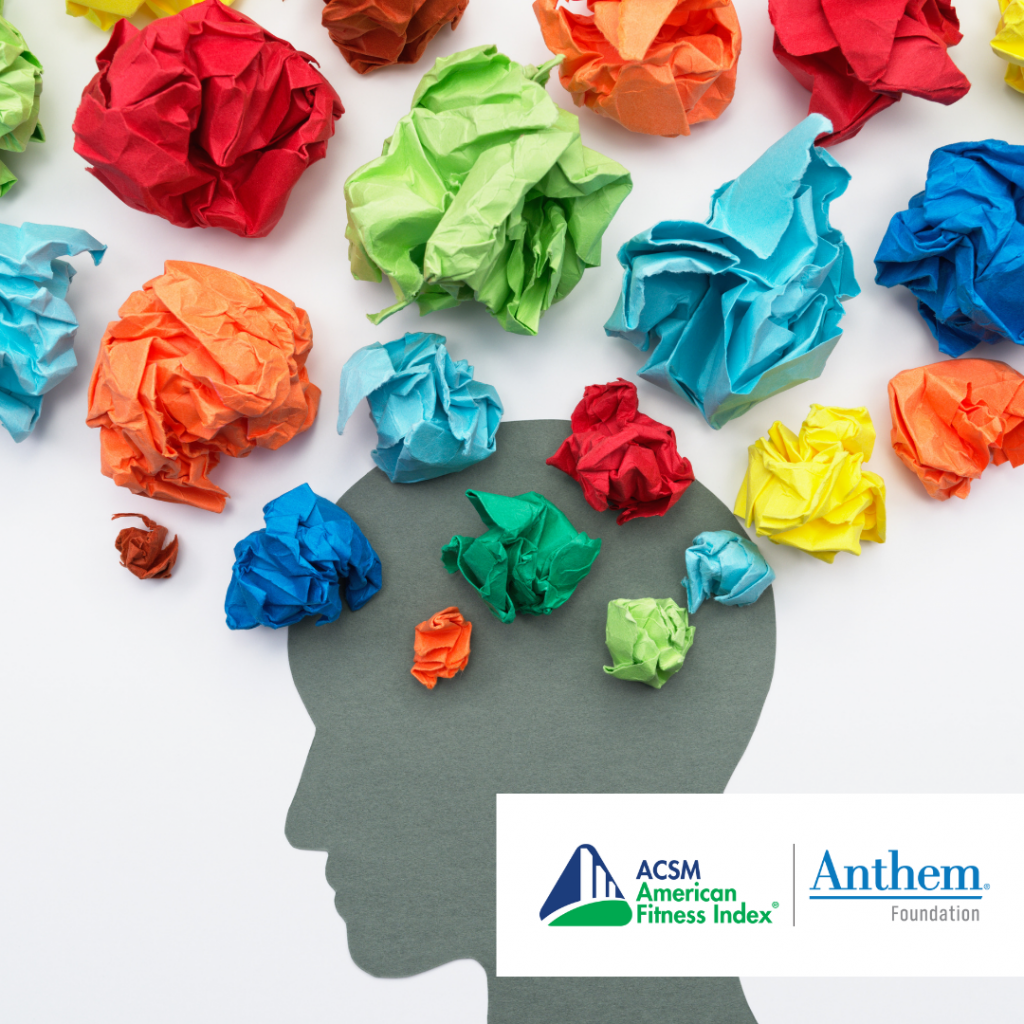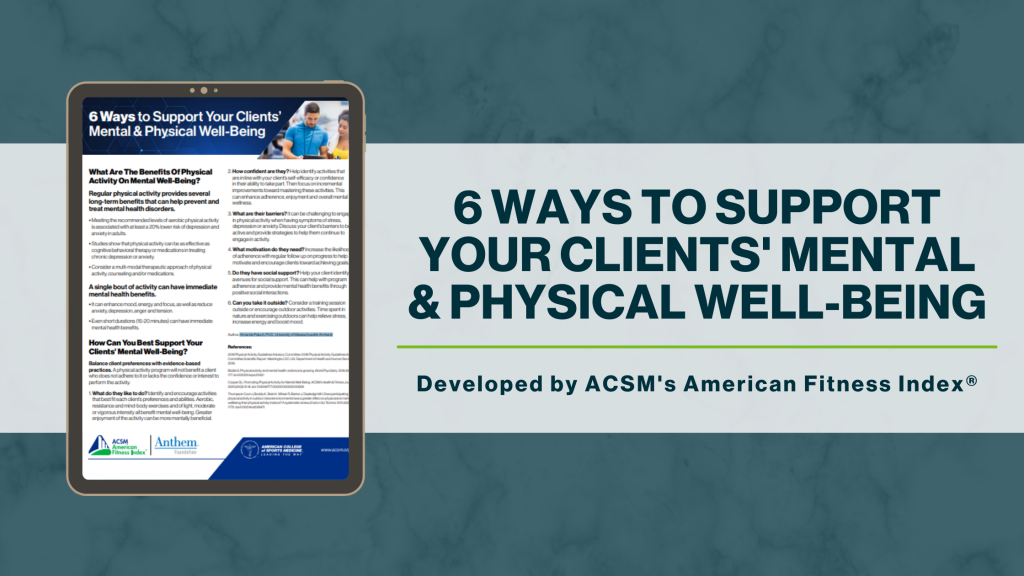One of the personal health indicators selected for inclusion into ACSM’s American Fitness Index is a measure of the mental health status of city residents. Mental health and physical health are both important components of overall health and are themselves closely connected. Mental health plays a major role in maintaining good physical health. Mental health issues, such as depression and anxiety, are known to reduce people’s ability and desire to participate in health-promoting behaviors. In addition, poor mental health increases the risk of developing a chronic physical health problem such as diabetes, heart disease and stroke.
Given the importance of good mental health to overall health, investing in resources to increase physical activity would be one way community leaders could improve their residents’ overall health and fitness. There is a growing body of evidence that recognizes the positive effects of exercise on reducing anxiety, stress and depression.
Current research shows why physical exercise is essential to mental health. In addition to other biochemical mechanisms, exercise is well known to stimulate the body to produce endorphins and enkephalins, the body’s natural “feel-good” hormones, which can improve an individual’s mood and make problems seem more manageable. Psychological mechanisms influence the effects of exercise on mood states, as suggested by both the distraction hypothesis and the self-efficacy hypothesis. The simple act of focusing on exercise can give us a break from current concerns and damaging self-talk.
Other research has shown that physical activity may play an important role in the prevention, treatment and management of mild to moderate mental health illnesses, especially depression and anxiety. Although people with depression tend to be less physically active than non-depressed individuals, increasing their participation in aerobic exercise and/or strength training has been shown to reduce depressive symptoms significantly. Anxiety symptoms and panic disorder also improve with regular exercise, and beneficial effects appear to equal that found with meditation or relaxation. Data suggests that acute anxiety responds particularly well to physical activity.
While participating in exercise generally is beneficial for both physical and mental health, it is important to note that people have widely varying preferences for the types of activity in which they may want to engage. Clearly, the mental health benefits are associated with physical activities that people want to do and enjoy doing. Consequently, cities should provide access to a variety of types of activity so that residents can choose those that are most attractive to them and that would be of greatest benefit to both their mental health and physical health.
Increasing access to physical activity resources like parks, trails and community centers is particularly important now that the COVID-19 pandemic has increased the need for mental health care in an already strained mental health system. The most recent published literature has documented a notable increase in reported depression and anxiety as a result of the COVID-19 pandemic. At the same time, there has been increased demand for public spaces to be physically active. Being physically active outdoors is particularly beneficial for mental health.
In addition to improving access to physical activity resources, city officials must partner together with business and community leaders to increase access to mental health services and reduce mental health stigma. Innovative initiatives are particularly important now to help those in need of mental health care access the care they need, including:
- Using public service announcements to decrease mental health stigma,
- Expanding access to community mental health centers,
- Co-locating mental health services with primary health care services,
- Supporting the use of telemedicine to increase the availability of mental health services,
- Improving health care providers’ and first responders’ awareness and use of mental health referral networks, and
- Expanding evidence-based training for mental health providers.
Many cities have implemented initiatives like these to improve access to mental health care for their residents. ACSM applauds their efforts and encourages other cities to adopt programs that have been shown to be effective elsewhere.
Author: Terrell W. Zollinger, DrPH, Professor Emeritus, Indiana University





